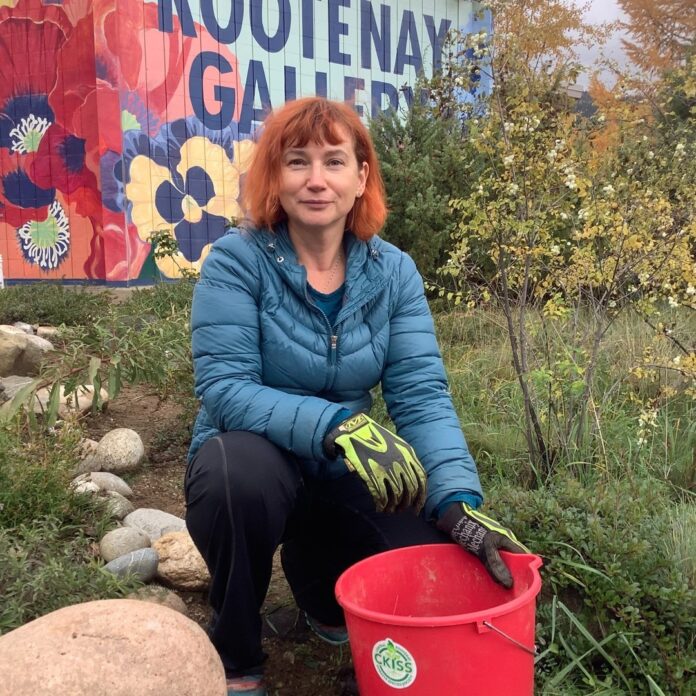The Castlegar woman who has spearheaded the Butterflyway Project is hopeful a national Communities in Bloom Award will lead to similar projects elsewhere in the community.
Olga Hallborg said the award in the heritage conservation category is very gratifying, but she doesn’t want people to think it means her group has achieved all its goals.
“It’s pleasant to have the hard work of volunteers and contributions of many passionate individuals and organizations be recognized at such a high level,” she said.
“This award should also mean it’s just beginning. Myself and other volunteers would like to see the expansion of gardens around the city. We need more of this.”
Since 2020, Hallborg has led a citizen movement to create habitat for bees and butterflies, beginning with a garden at the Kootenay Gallery.
She said the original garden at the site was started around 2007 and involved many organizations. A few years ago, her group began revitalizing them.
“We looked at those beautiful gardens and wanted to add to that beauty and give them more care as we believed they deserved,” she said.
She approached Darlene Kalawsky of Communities in Bloom and Val Field, the gallery’s former director and together they reached out to the Kootenay Native Plant Society, KinSeed Ecologies, Central Kootenay Invasive Species Society, and Bren Beckwith who has a PhD in ethnobotany. Beckwith developed a plan to redevelop the existing gardens.
Hallborg has a hard time keeping track of how many volunteers have been involved, but suspects it’s over 100, because some came once to learn and started working on similar initiatives elsewhere while others were regulars.
“This project is about learning and education,” she said. “We all started knowing very little. We still don’t know everything, so we’re in touch with our experts.”
Hallborg said when the Communities in Bloom judges visited, they admired the garden’s beauty and appreciated its contribution toward creating habitat for native plants and pollinators.
She said it’s a testament to the work of volunteers, as some communities have paid staff performing this sort of work.
“It’s kind of hard to complete with communities with larger resources. When the efforts of volunteers are recognized, it’s very rewarding.”
But an even bigger tribute, she says, would be to see others take their lead and build additional native plant gardens.
She notes the award was not given to “some spectacular, exotic planting” but to native plants, which she feels have long been undervalued. She said most people probably know a lot more about cultivated plants, but the award may be a sign things are shifting.
“If you ask someone to name 10 plants, you probably would hear peony, rose, and so on, but I doubt people will start with native plants,” she said. “I think this award means a lot in terms of how we should be paying more attention, learning more about the importance of native plants and planting them more.”
Hallborg would like to see people transform their own front yards from green lawns into pollinator meadows.
She said while settlers are not always educated to see the beauty of native plants, “I am confident we can relearn this and start teaching ourselves and our children and our communities about appreciating the less aggressive beauty of native plants than some horticultural plants.”
She added that supporting native plants and pollinators are also small steps toward reconciliation with Indigenous peoples, something she believes is impossible without reconciling with the land as well.
Hallborg said she has been encouraged by the start of “small but still very important” new native pollinator beds by the environmental club at Stanley Humphries Secondary and hopes it could be done at other schools in the district.
“If anything, I hope this award for natural heritage conservation reminds us about the importance of building relationships with nature and with plants,” she said.




